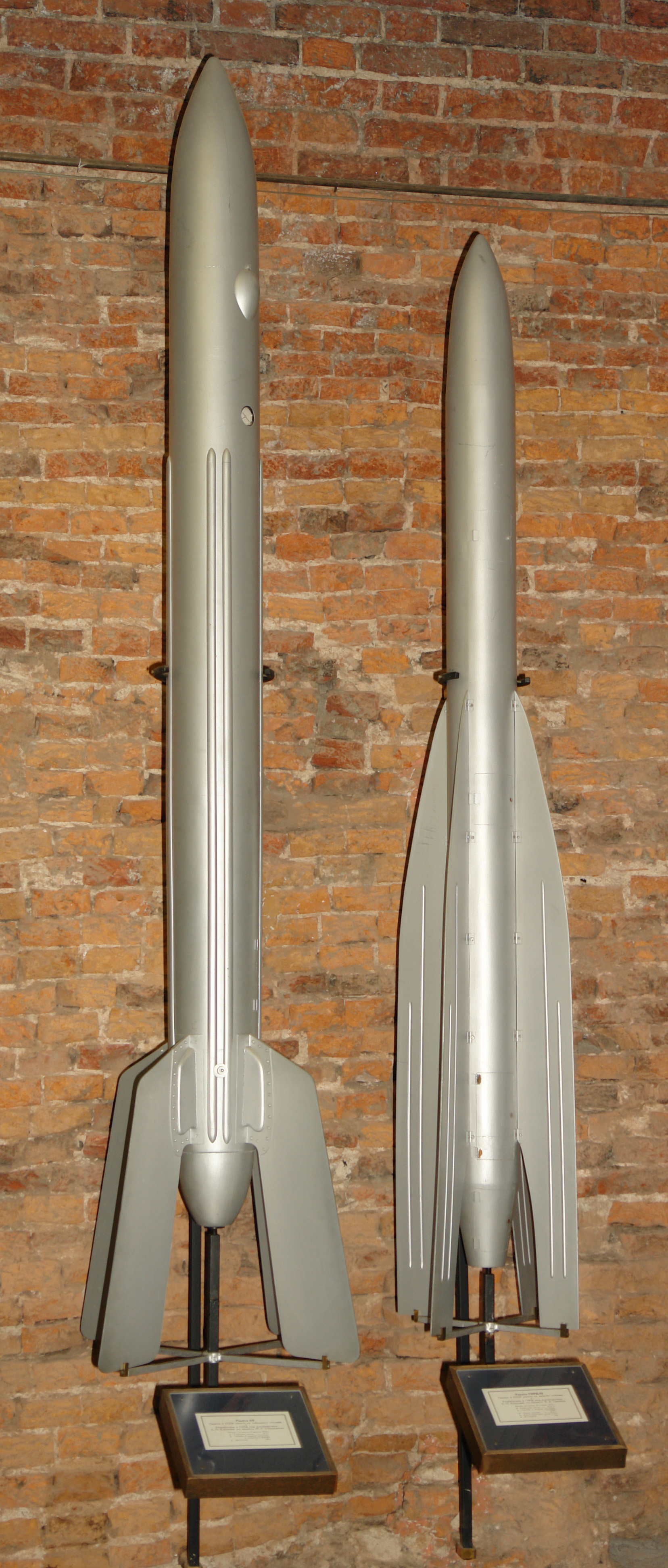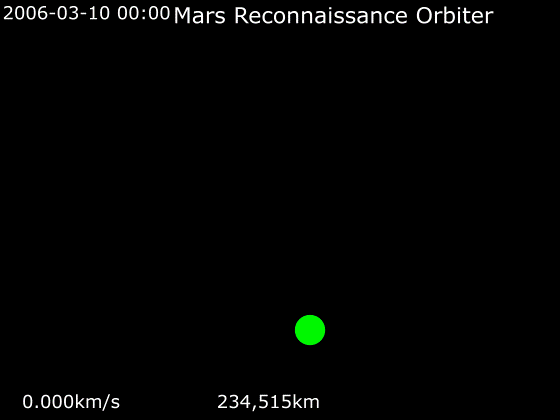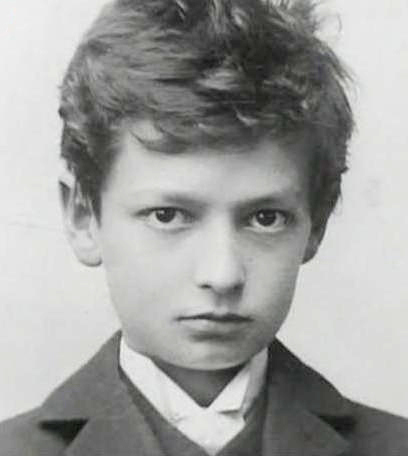|
Fridrikh Tsander
Georg Arthur Constantin Friedrich Zander (also Tsander, russian: Фридрих Артурович Цандер, tr. ; lv, Frīdrihs Canders, – 28 March 1933), was a Baltic German pioneer of rocketry and spaceflight in the Russian Empire and the Soviet Union. He designed the first liquid-fueled rocket to be launched in the Soviet Union, GIRD-X, and made many important theoretical contributions to the road to space. Biography Zander was born in Riga, Russian Empire, into a Baltic German commoner family. His father Arthur Georg Zander was a doctor, but Friedrich Zander was fascinated by other natural sciences. Zander was enrolled in the Riga urban technical high school in 1898, for a seven-year program in which he was a top student. During this time, he became acquainted with the work of Konstantin Tsiolkovsky and space travel became his foremost scientific passion. While studying engineering at the Riga Polytechnic Institute, he carried out trajectory calculations for a fli ... [...More Info...] [...Related Items...] OR: [Wikipedia] [Google] [Baidu] |
Great Soviet Encyclopedia
The ''Great Soviet Encyclopedia'' (GSE; ) is one of the largest Russian-language encyclopedias, published in the Soviet Union from 1926 to 1990. After 2002, the encyclopedia's data was partially included into the later ''Bolshaya rossiyskaya entsiklopediya'' (or '' Great Russian Encyclopedia'') in an updated and revised form. The GSE claimed to be "the first Marxist–Leninist general-purpose encyclopedia". Origins The idea of the ''Great Soviet Encyclopedia'' emerged in 1923 on the initiative of Otto Schmidt, a member of the Russian Academy of Sciences. In early 1924 Schmidt worked with a group which included Mikhail Pokrovsky, (rector of the Institute of Red Professors), Nikolai Meshcheryakov (Former head of the Glavit, the State Administration of Publishing Affairs), Valery Bryusov (poet), Veniamin Kagan (mathematician) and Konstantin Kuzminsky to draw up a proposal which was agreed to in April 1924. Also involved was Anatoly Lunacharsky, People's Commissar of Education ... [...More Info...] [...Related Items...] OR: [Wikipedia] [Google] [Baidu] |
GIRD
The Moscow-based Group for the Study of Reactive Motion (also 'Group for the Investigation of Reactive Engines and Reactive Flight' and 'Jet Propulsion Study Group') (russian: Группа изучения реактивного движения, Gruppa izucheniya reaktivnogo dvizheniya, better known for its Russian abbreviation , GIRD) was a Soviet research bureau founded in 1931 to study various aspects of rocketry. GIRD launched the first Soviet Liquid-propellant rocket, liquid propellant rocket in August 1933. In November 1933 it was incorporated into the Reactive Scientific Research Institute (, , РНИИ, RNII). History The inspiration for establishing the organisation came from Friedrich Zander, Fredrich Tsander, a scientist, inventor, and romantic who dreamed of space travel. Tsander had begun to consider rocket-powered interplanetary flight as early as 1907 and was one of the founding members of the Society for the Study of Interplanetary Communication in 1924. In Septem ... [...More Info...] [...Related Items...] OR: [Wikipedia] [Google] [Baidu] |
Moscow Institute
Moscow ( , US chiefly ; rus, links=no, Москва, r=Moskva, p=mɐskˈva, a=Москва.ogg) is the capital and largest city of Russia. The city stands on the Moskva River in Central Russia, with a population estimated at 13.0 million residents within the city limits, over 17 million residents in the urban area, and over 21.5 million residents in the metropolitan area. The city covers an area of , while the urban area covers , and the metropolitan area covers over . Moscow is among the world's largest cities; being the most populous city entirely in Europe, the largest urban and metropolitan area in Europe, and the largest city by land area on the European continent. First documented in 1147, Moscow grew to become a prosperous and powerful city that served as the capital of the Grand Duchy that bears its name. When the Grand Duchy of Moscow evolved into the Tsardom of Russia, Moscow remained the political and economic center for most of the Tsardom's history. When the Ts ... [...More Info...] [...Related Items...] OR: [Wikipedia] [Google] [Baidu] |
Moscow
Moscow ( , US chiefly ; rus, links=no, Москва, r=Moskva, p=mɐskˈva, a=Москва.ogg) is the capital and largest city of Russia. The city stands on the Moskva River in Central Russia, with a population estimated at 13.0 million residents within the city limits, over 17 million residents in the urban area, and over 21.5 million residents in the metropolitan area. The city covers an area of , while the urban area covers , and the metropolitan area covers over . Moscow is among the world's largest cities; being the most populous city entirely in Europe, the largest urban and metropolitan area in Europe, and the largest city by land area on the European continent. First documented in 1147, Moscow grew to become a prosperous and powerful city that served as the capital of the Grand Duchy that bears its name. When the Grand Duchy of Moscow evolved into the Tsardom of Russia, Moscow remained the political and economic center for most of the Tsardom's history. When th ... [...More Info...] [...Related Items...] OR: [Wikipedia] [Google] [Baidu] |
Patent
A patent is a type of intellectual property that gives its owner the legal right to exclude others from making, using, or selling an invention for a limited period of time in exchange for publishing an enabling disclosure of the invention."A patent is not the grant of a right to make or use or sell. It does not, directly or indirectly, imply any such right. It grants only the right to exclude others. The supposition that a right to make is created by the patent grant is obviously inconsistent with the established distinctions between generic and specific patents, and with the well-known fact that a very considerable portion of the patents granted are in a field covered by a former relatively generic or basic patent, are tributary to such earlier patent, and cannot be practiced unless by license thereunder." – ''Herman v. Youngstown Car Mfg. Co.'', 191 F. 579, 584–85, 112 CCA 185 (6th Cir. 1911) In most countries, patent rights fall under private law and the patent holder mus ... [...More Info...] [...Related Items...] OR: [Wikipedia] [Google] [Baidu] |
Re-entry
Atmospheric entry is the movement of an object from outer space into and through the gases of an atmosphere of a planet, dwarf planet, or natural satellite. There are two main types of atmospheric entry: ''uncontrolled entry'', such as the entry of astronomical objects, space debris, or bolides; and ''controlled entry'' (or ''reentry'') of a spacecraft capable of being navigated or following a predetermined course. Technologies and procedures allowing the controlled atmospheric ''entry, descent, and landing'' of spacecraft are collectively termed as ''EDL''. Objects entering an atmosphere experience atmospheric drag, which puts mechanical stress on the object, and aerodynamic heating—caused mostly by compression of the air in front of the object, but also by drag. These forces can cause loss of mass (ablation) or even complete disintegration of smaller objects, and objects with lower compressive strength can explode. Crewed space vehicles must be slowed to subsonic speeds be ... [...More Info...] [...Related Items...] OR: [Wikipedia] [Google] [Baidu] |
Aerobraking
Aerobraking is a spaceflight maneuver that reduces the high point of an elliptical orbit (apoapsis) by flying the vehicle through the atmosphere at the low point of the orbit (periapsis). The resulting drag slows the spacecraft. Aerobraking is used when a spacecraft requires a low orbit after arriving at a body with an atmosphere, as it requires less fuel than using propulsion to slow down. Method When an interplanetary vehicle arrives at its destination, it must reduce its velocity to achieve orbit or to land. To reach a low, near-circular orbit around a body with substantial gravity (as is required for many scientific studies), the required velocity changes can be on the order of kilometers per second. Using propulsion, the rocket equation dictates that a large fraction of the spacecraft mass must consist of fuel. This reduces the science payload and/or requires a large and expensive rocket. Provided the target body has an atmosphere, aerobraking can be used to reduce fuel req ... [...More Info...] [...Related Items...] OR: [Wikipedia] [Google] [Baidu] |
Society For Studies Of Interplanetary Travel
The Society for Studies of Interplanetary Travel (OIMS, russian: Общество изучения межпланетных сообщений) was founded in Moscow in May 1924. It was a spin-off of a military science society at the Zhukovsky Airforce Academy, and was chaired by Grigory Kramarov Grigory Moiseevich Kramarov (russian: Григо́рий Моисеевич Кра́маров; 1887–1970), real name Gershel Moishevich Kramar (russian: Гершель Мойшевич Кра́мар) was a Russian Russian(s) refers to a .... Its 200 charter members included important Soviet space-exploration and rocketry experts such as Konstantin Tsiolkovsky, Fridrikh Tsander, and Vladimir Vetchinkin. The society allowed engineers and educators to meet and discuss space travel, and it organized public educational events. OIMS hosted a famous public debate on October 4, 1924 to discuss the idea of Robert Goddard to launch a rocket to the Moon.From the History of Early Sovi ... [...More Info...] [...Related Items...] OR: [Wikipedia] [Google] [Baidu] |
Vladimir Vetchinkin
Vladimir Petrovich Vetchinkin (russian: Владимир Петрович Ветчинкин) (June 29, 1888 - March 6, 1950) was a Soviet Union, Soviet scientist in the field of aerodynamics, aeronautics, and Wind power, wind energy, Doctor of Sciences, Doctor of Technical Sciences (1927), Honored Science Worker of the RSFSR (1946). Biography Vladimir Petrovich was born in Kutno (then in the Russian division of Poland), the son of a Russian military officer. Vetchinkin graduated from Moscow Higher Technical School (MVTU) in 1915, the favorite student of Nikolay Zhukovsky (scientist), Nikolay Zhukovsky and generally viewed as his successor. In 1913, they had created a vortex-sheet theory of aircraft propellers. In 1916, Vetchinkin and Zhukovsky created the aviation calculation and test bureau in the wind-tunnel laboratory of the Moscow Higher Technical School, and in 1918 he helped found the Central Aerohydrodynamic Institute, Zhukovsky Central Institute of Aerodynamics (TsAGI). He ... [...More Info...] [...Related Items...] OR: [Wikipedia] [Google] [Baidu] |
Robert Goddard
Robert Hutchings Goddard (October 5, 1882 – August 10, 1945) was an American engineer, professor, physicist, and inventor who is credited with creating and building the world's first Liquid-propellant rocket, liquid-fueled rocket. Goddard successfully launched his rocket on March 16, 1926, which ushered in an era of space flight and innovation. He and his team launched 34 rockets between 1926 and 1941, achieving altitudes as high as and speeds as fast as 885 km/h (550 mph). Goddard's work as both theorist and engineer anticipated many of the developments that would make spaceflight possible. He has been called the man who ushered in the Space Age. Two of Goddard's 214 patented inventions, a multi-stage rocket (1914), and a liquid-fuel rocket (1914), were important milestones toward spaceflight. His 1919 monograph ''#A Method of Reaching Extreme Altitudes, A Method of Reaching Extreme Altitudes'' is considered one of the classic texts of 20th-century rocke ... [...More Info...] [...Related Items...] OR: [Wikipedia] [Google] [Baidu] |
Hermann Oberth
Hermann Julius Oberth (; 25 June 1894 – 28 December 1989) was an Austro-Hungarian-born German physicist and engineer. He is considered one of the founding fathers of rocketry and astronautics, along with Robert Esnault-Pelterie, Konstantin Tsiolkovsky, Robert Goddard and Herman Potočnik.During WWII he supported Nazi Germany's ''Aggregat'' rocket program. Early life Oberth was born to a Transylvanian Saxon family in Nagyszeben (Hermannstadt), Austrian-Hungary Empire (today Sibiu in Romania). He was fluent in Romanian language. At the age of 11 years, Oberth's interest in rocketry was set off by the novels of Jules Verne, especially ''From the Earth to the Moon'' and ''Around the Moon''. He was fond of reading them over and over until they were engraved in his memory. As a result, Oberth constructed his first model rocket as a school student at the age of 14. In his youthful experiments, he arrived independently at the concept of the multistage rocket. However, during this ... [...More Info...] [...Related Items...] OR: [Wikipedia] [Google] [Baidu] |
Friedrich Zander
Georg Arthur Constantin Friedrich Zander (also Tsander, russian: Фридрих Артурович Цандер, tr. ; lv, Frīdrihs Canders, – 28 March 1933), was a Baltic German pioneer of rocketry and spaceflight in the Russian Empire and the Soviet Union. He designed the first liquid-fueled rocket to be launched in the Soviet Union, GIRD-X, and made many important theoretical contributions to the road to space. Biography Zander was born in Riga, Russian Empire, into a Baltic German commoner family. His father Arthur Georg Zander was a doctor, but Friedrich Zander was fascinated by other natural sciences. Zander was enrolled in the Riga urban technical high school in 1898, for a seven-year program in which he was a top student. During this time, he became acquainted with the work of Konstantin Tsiolkovsky and space travel became his foremost scientific passion. While studying engineering at the Riga Polytechnic Institute, he carried out trajectory calculations for a flig ... [...More Info...] [...Related Items...] OR: [Wikipedia] [Google] [Baidu] |





.jpg)
